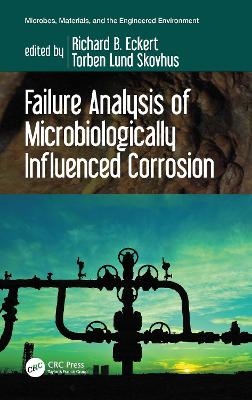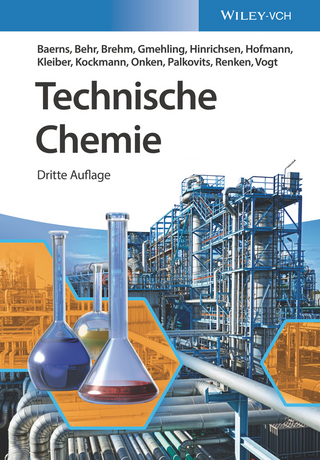
Failure Analysis of Microbiologically Influenced Corrosion
CRC Press (Verlag)
978-0-367-35680-4 (ISBN)
Failure Analysis of Microbiologically Influenced Corrosion serves as a complete guide to corrosion failure analysis with an emphasis on the diagnosis of microbiologically influenced corrosion (MIC). By applying the principles of chemistry, microbiology, and metallurgy, readers will be able to reliably determine the mechanistic cause of corrosion damage and failures and select the appropriate methods for mitigating future corrosion incidents.
FEATURES
Provides background information on the forensic process, types of data or evidence needed to perform the analysis, industrial case studies, details on the MIC failure analysis process, and protocols for field and lab use
Presents up-to-date advances in molecular technologies and their application to corrosion failure investigations
Offers specific guidelines for conducting MIC failure analyses and case studies to illustrate their application
Examines state-of-the-art information on MIC analytical tools and methods
With authors with expertise in microbiology, corrosion, materials, and failure investigation, this book provides tools for engineers, scientists, and technologists to successfully combat MIC issues.
Richard B. Eckert is Senior Principal Specialist in the Corrosion Management group at DNV in Dublin, Ohio, USA. Much of his work is focused on MIC diagnosis and mitigation in the oil and gas industry in which he has worked for over 40 years. Torben Lund Skovhus is Docent & Project Manager at VIA University College and CEO at Skovhus BioConsult in Horsens, Denmark. He undertakes applied research on a range of aspects including: industrial microbiology, applied biotechnology, corrosion management, oilfield microbiology, water treatment and safety, reservoir souring, and microbial corrosion.
Part I: Introduction 1. History of Failure Analysis for Microbiologically Influenced Corrosion 2. Review and Gap Analysis of MIC Failure Investigation Methods in Alberta’s Oil and Gas Sector 3. A Practical Approach to Corrosion Failure Analysis 4. Analytical Methods for MIC Assessment 5. Microbiologically Influenced Corrosion Mechanisms 6. Iron to Gas: The Mechanisms behind Methanogen-Induced Microbiologically Influenced Corrosion (Mi-MIC) and Their Importance for the Industry and Infrastructure Part II: MIC Failure Analysis Case Studies 7. Failure Investigation of a Leak in the Offshore Water Injection System 8. Failure Analysis for Internal Corrosion of Crude Oil Transporting Pipelines 9. Failure Analysis of Microbiologically Influenced Corrosion in Storage Tanks Containing B20 Biodiesel 10. Elemental Sulfur Corrosion: A Case Study 11. MIC Investigation of Stainless Steel Seal Ring Corrosion Failure in a Floating Production Storage and Offloading (FPSO) Vessel 12. Failure Analysis of Tubing in an Electrical Submersible Pump Well 13. Pitting Biocorrosion in Internal Pipeline Welds 14. Impact of Metallurgical Properties on Pitting Corrosion in a High-Pressure Seawater Injection Pipeline 15. Appearance of MIC in Well-Flowlines Producing from a Sour Reservoir Part III: MIC in Other Engineered Systems 16. Failure Analysis of Pipe in a Fire Suppression System 17. Analysis of Field Observations of Severe MIC of FPSO Mooring Chains 18. MIC in the Fire Water Sprinkler System at St. Olavs Hospital, Trondheim, Norway 19. Microbiologically Influenced Corrosion in Fire Protection Systems: A Material Problem or a Problem of Microbial Activity? Part IV: MIC Failure Analysis Processes and Protocols 20. Determining the Root Cause for Corrosion Failures 21. MIC Sampling Strategies 22. Microbiological Sampling and Preservation for Evaluating Microbial Communities in Oilfield and Other Biological Samples Using Molecular Microbiological Methods 23. Implications of Sampling and Chemistry 24. Workflow of Transportation, Sampling, and Documentation of Topsides Pipework with a Leak from an Offshore Oil Platform 25. Standards for MIC Management in Engineered Systems 26. Standard Operating Procedures for Sampling Onshore and Offshore Assets for Genomic, Microbial and Chemical Analyses and/or Experiments
| Erscheinungsdatum | 09.11.2021 |
|---|---|
| Reihe/Serie | Microbes, Materials, and the Engineered Environment |
| Zusatzinfo | 74 Tables, black and white; 132 Line drawings, black and white; 116 Halftones, black and white; 248 Illustrations, black and white |
| Verlagsort | London |
| Sprache | englisch |
| Maße | 156 x 234 mm |
| Gewicht | 839 g |
| Themenwelt | Naturwissenschaften ► Chemie ► Technische Chemie |
| Technik ► Bergbau | |
| Technik ► Maschinenbau | |
| ISBN-10 | 0-367-35680-5 / 0367356805 |
| ISBN-13 | 978-0-367-35680-4 / 9780367356804 |
| Zustand | Neuware |
| Informationen gemäß Produktsicherheitsverordnung (GPSR) | |
| Haben Sie eine Frage zum Produkt? |
aus dem Bereich


